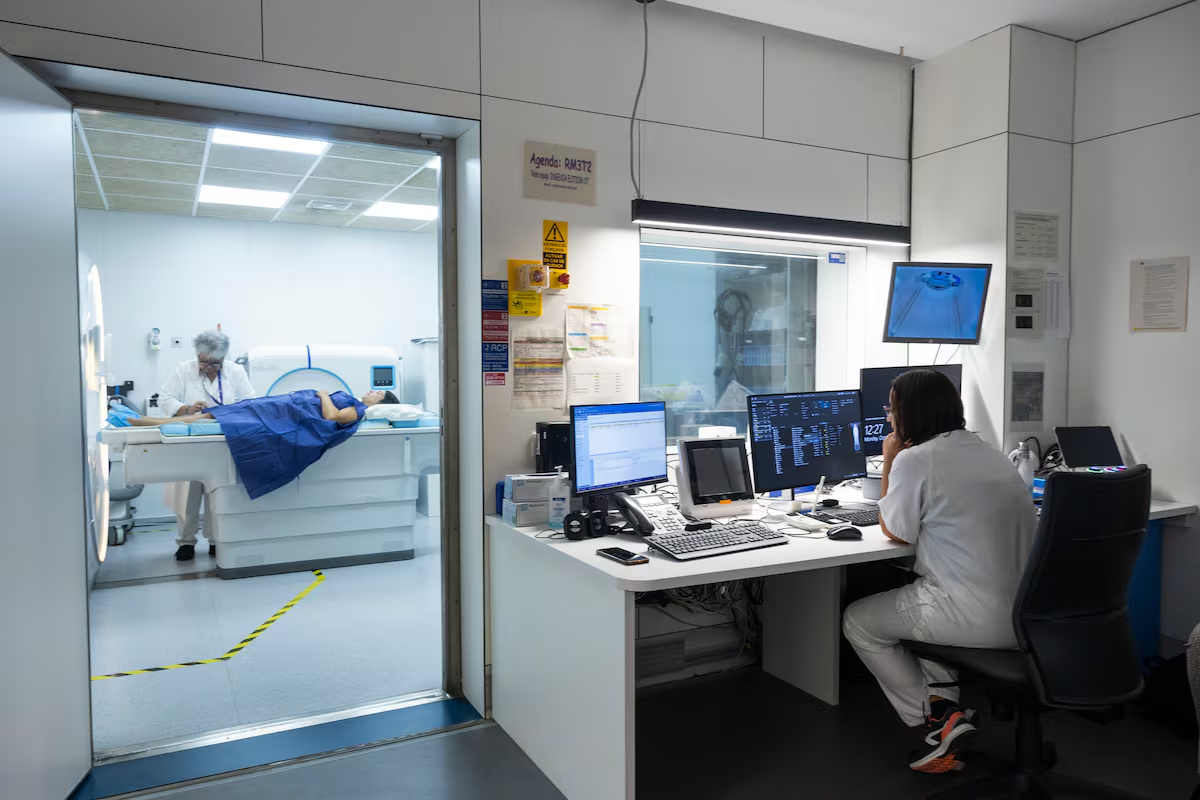
At the last Regional Presidential Conference in December 2024, Pedro Sánchez pledged a total of 223 million euros to introduce technology and artificial intelligence into the healthcare system within the HealthTech Initiative. This Thursday, Catalonia became the first community (in his case 27 million people) to sign the agreement to start its implementation, which is expected to materialize early next year.
The plan consists of a series of projects within the framework of cooperation between Red.es, the Ministry of Health and the Ministry of Digital Transformation, including the implementation of remote monitoring programs for the monitoring of chronic medical conditions and the development of the use of neurotechnology and artificial intelligence.
The agreement, which will be signed this Thursday by President Salvador Illa and Minister Óscar López, will be the first of its kind. The remaining autonomous communities are expected to follow in the coming weeks and months. According to government officials, all regions except Murcia and Madrid have started administrative procedures. They must do so by July 2026.
The Health Tech Initiative is based on three courses of action. The first is the creation of a national diagnostic imaging network that will enable interoperability of all tests performed in the country. This facilitates remote access to medical images, which can be viewed from any community in the absence of a patient, for use in research, and for training AI algorithms that can improve diagnostics and clinical decision-making.
The second line will focus on the deployment of specific applications of AI in both diagnostics and hospital management. Examples of its applications include optimizing waiting lists, automatic operating room planning, and optimizing family physician allocation management. Each patient is assigned a large number of patients, but AI identifies the most demanding patients in the system (usually the elderly) and combines them with other patients who see less frequently, allowing all doctors within the same health center to make up their schedules.
The project also aims to generalize the use of this technology through consultation. It helps doctors screen radiology images and detect drug interactions. The program can identify whether a patient is using incompatible drugs from a long clinical history, or warn if a patient has been using one drug for too long.
Investments in AI can also help leverage massive analyzes of clinical data to support the diagnosis of rare diseases and identify patient risks for oncology and cardiovascular disease.
The third line is aimed at monitoring chronic patients from home through a digital platform that records their activities, vital signs, and response to treatment. Patients will be able to electronically submit measurements such as blood pressure, oxygen saturation, and blood sugar levels, and the system will alert medical teams for preventive interventions with the aim of reducing hospitalizations and improving quality of life.
This project will be developed in cooperation with autonomous communities. Rather than transferring funds, it becomes a model of group purchasing to centralize resources and reduce costs.



